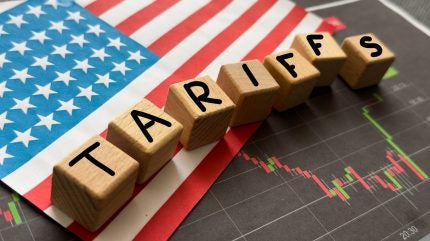
As the year progresses, forecasting the effects of new tariffs and government measures on the US economy remains a challenge, points out Kleinhenz.
Kleinhenz noted that a robust 2.8% annual increase in gross domestic product for 2024 underscores the economic strength, driven by consumer expenditure and supported by business and government spending.

Discover B2B Marketing That Performs
Combine business intelligence and editorial excellence to reach engaged professionals across 36 leading media platforms.
“This year began with high expectations for the strength of the US economy.
“Since then, anxiety and confusion have taken centre stage in the economy and financial markets as uncertainty over public policy has intensified. It was difficult to judge how policy changes would impact the economy in early 2025 and it remains so now,” Kleinhenz said.
Economic growth has been relatively resilient so far this year despite prevailing uncertainties according to the July issue of NRF’s Monthly Economic Review with GDP declining 0.5% in the first quarter.
This was attributed primarily to a spike in imports triggered by tariff announcements.

US Tariffs are shifting - will you react or anticipate?
Don’t let policy changes catch you off guard. Stay proactive with real-time data and expert analysis.
By GlobalDataHowever, private final sales to domestic purchasers, which is a key indicator of consumer and business spending, saw a 1.9% year-over-year increase.
Although this figure represents a decrease from the previous quarter’s 2.9%, it still indicates robust private sector demand and suggests that the economic slowdown is less severe than anticipated, said Kleinhenz.
The Personal Consumption Expenditures Price Index also recorded a slight rise in year-over-year inflation to 2.3% in May from April’s 2.1%.
Concurrently, personal income and consumer spending experienced an unadjusted increase of 4.5% in May.
Core retail sales, which exclude automobile dealerships, gasoline stations, and restaurants, climbed by 3.9% year-over-year in both May and for the initial five months of the year.
NRF’s statistics last month showed a continuation of growth in US retail sales for clothing and related sectors in May despite a slowdown in consumer purchasing ahead of tariffs.
Employment figures are surpassing expectations, with the addition of 147,000 jobs in June this year, slightly above the yearly average.
The unemployment rate remained stable at 4.1%, while job openings surged to 7.8 million in June.
While tariffs have not yet made a significant impact on consumer prices, Kleinhenz warns that if the substantial tariff hikes announced earlier this year are implemented and maintained, they could permeate consumer prices.
This could potentially reduce spending and affect the labour market with increased unemployment later in the year.
Kleinhenz did not expect the Federal Reserve to reduce interest rates this month; however, cuts may be on the horizon for autumn.
Meanwhile, Fed officials are monitoring how consumers’ inflation expectations shape their spending and saving behaviours in response to short-term price fluctuations.
Quantifying uncertainty is challenging; nevertheless, an Economic Policy Uncertainty Index created by Stanford and Northwestern economists has halved since reaching peak levels during April.
The enactment of the One Big Beautiful Bill Act introduces multiple variables that “could greatly alter the economic outlook” based on business and consumer responses.
Yet, according to Kleinhenz, this legislation—which encompasses business incentives, permanent tax reductions for individuals, and workforce participation inducements—diminishes fiscal policy uncertainty considerably.
The latest Global Port Tracker report, published by the National Retail Federation and Hackett Associates revealed that Cargo imports at key US container ports are projected to experience an uptick in the coming months, with retailers poised to capitalise on a temporary 90-day tariff reduction on goods from China.





